Petrified wood, Australian gold nugget, gemstones and meteorites highlight Heritage Auctions sale
DALLAS, TX.- Samples of rare Petrified Wood will be among the most coveted lots at Heritage Auctions' Nature & Science Auction April 29-30 in Dallas.
The Petrified Wood comes from the collection of Lewis Goodman, a successful financier who turned a 1980s visit to a Colorado gift shop into a lifetime spent collecting petrified wood and agates.
"The Lewis Goodman collection features some exceptional samples of Petrified Wood, some of the finest we have ever seen," Heritage Auctions Nature & Science Director Craig Kissick said. "This allows us to offer shrewd science collectors a rare opportunity to acquire pieces from what has become an exceptional collection."
The top Petrified Wood lots include, but are not limited to:
Lot 72053. Petrified Conifer Slab, Araucarioxylon, Triassic, Chinle Formation, Navajo County, Arizona, USA, 48.00 x 45.00 x 1.50 inches (121.92 x 114.30 x 3.81 cm). Estimate: $12,000 - $18,000.
Largest specimen in Lewis Goodman collection. Wood backed and reinformed slab of irregular shape. Muddy reddish-brown coloration with pockets of crystallizations.
Provenance: Lewis Goodman Collection
Lot 72024. Petrified Oak Slab, Quercus, Miocene, Juntura Formation, Stinkingwater Mountain, Jarney County, Oregon, USA, 35.00 x 29.50 x 1.75 inches (88.90 x 74.93 x 4.45 cm). Estimate: $7,000 - $10,000.
Spectacular large example from classic locality. Superlative size, shape and pattern. Complex structure highlighted by a glossy surface. An exceptional larger specimen.
Provenance: Lewis Goodman Collection
Lot 72008. Petrified Conifer Slab, Oligocene, Sweet Home, Linn County, Oregon, USA, 32.00 x 27.75 x 1.50 inches (81.28 x 70.49 x 3.81 cm). Estimate: $6,000 - $8,000.
Monster piece with intense blue center and tan rim. Substantial example with huge decorative appeal. Great specimen from classic American locality for material.
Provenance: Lewis Goodman Collection
Lot 72065. Petrified Conifer Slab, Araucarioxylon, Jurassic, Shishugon Formation, Junggar Bassin, Kitai County, Xinjiang Province, China, 33.50 x 27.12 x 1.33 inches (85.09 x 68.88 x 3.38 cm). Estimate: $6,000 - $8,000.
Huge slab with vibrant red and mauve coloration. Polished on both sides for maximal display potential. Lots of complexity with numerous patches of contrasting hues.
Provenance: Lewis Goodman Collection
In addition to the Petrified Wood, the auction includes several extraordinary lots – many of which will be available on the auction's second day – that will draw the attention of collectors of all kinds.
Evoking images of widespread dreams of striking it rich, an Australian Gold Nugget (est. $25,000-35,000) is expected to catch the eye of numerous collectors. Dubbed the "Big One," this nugget is nearly four inches long and weighs in at 554 grams. Australian gold is known for its appealing shapes and high quality of gold, and this example, with two display-quality sides, certainly falls into that category.
Lot 72282. Gold Nugget, Bendigo, City of Great Bendigo, Victoria, Australia. Overall Measurements: 3.82 x 1.94 x 0.81 inches (9.70 x 4.92 x 2.05 cm). Estimate: $25,000 - $35,000.
Australian Gold nuggets are known and admired for their appealing shapes and high purity of Gold. This large nugget from Down Under exhibits the best characteristics of Aussie Golds. Dubbed the "Big One" and weighing a robust 554 grams, it has a tested Gold content of 17.84 troy ounces. Both faces have an appealing appearance allowing for versatility and two-sided display. Not only is this large Native Gold nugget rather aesthetic, it is also well worth its weight in Gold.
A 61-by-27-inch Fossil Palm Flower (est. $20,000-30,000) is an incredible specimen featuring an elongated Palm Flower known as an "Infloresence," which exhibits exceptional form and detail. Discovered in the infamous Green River Formation of Wyoming, which is renowned for its production of botanical fossils. The climate was similar to that currently found in Florida; the paleoenviroment of the lake continued for about two million years, culminating with the quality preservation of numerous fossil plants, including this one.
Lot 72232. Fossil Palm Flower, Undetermined species, Eocence Age, Green River Formation, Wyoming, USA. Overall Measurements: 61.00 x 27.00 x 2.75 inches (154.94 x 68.58 x 6.00 cm). Estimate: $20,000 - $30,000.
This absolutely incredible fossil specimen features an elongated and impressive Palm Flower known as an "Infloresence" which exhibits exceptional form and beautiful detail. This lovely artistic example was discovered in the famous Green River Formation of Wyoming, world renowned for producing amazing botanical fossils in addition to numerous varieties of fossil fishes and other marine life endemic to the significant Lagerstätte. Some 50 million years ago during the Eocene Epoch, the climate of Fossil Lake was subtropical and similar to that of modern-day Florida. The paleoenvironment of the lake continued for some two million years culminating in the quality preservation of many fossil plants, including this exquisite Palm Flower. On a large rectangle matrix of light tan, gold and gray, a long brown stem with a slight taper extends up and over the subtly layered rock with a of number flaky "varves" represented. Many clusters of thin, fibrous extensions radiating in various directions populate multiple, smaller "off-shoot" sections which branch off the primary stem. The rarity of this variety of fossil makes it highly collectible, and the decorative appeal of the piece makes it something special. An impact showpiece on every level, the embedded fossil has been secured in a solid, dark and brown wooden frame which surrounds the ancient slab of rock. The reverse side features a "cleat" system for wall hanging. This uncommon fossil will be a statement piece in any environment in which it can be installed as a true work of natural art.
A Muonionalusta Meteorite Pen (est. $15,000-25,000) is a one-of-a-kind collectible. Fashioned from the world-renowned Swedish Meteorite, this fully functional fountain pen is a result of painstaking design and creation. The barrel – which is engraved with the word "METEORITE" – and cap of the pen have been cut and etched to reveal the exclusive latticework pattern that is diagnostic to individual Iron Meteorites. The cap features a round green Moldavite gemstone with a round cut and brilliant facets. The pocket clip of the pen also has been accented with a smaller, pear-shaped Moldavite gemstone.
Lot 72205. Muonionalusta Meteorite Pen, Muonionalusta - Iron fine octahedrite - (IVA), Northern Sweden - (67° 48'N, 23° 6'E). Overall Measurements: 6.02 x 0.91 x 0.59 inches (15.30 x 2.30 x 1.50 cm). Estimate: $15,000 - $25,000.
Truly one-of-a-kind pieces are few and far between, but this unbelievable fountain pen fashioned out of material from the world renowned Swedish Muonionalusta Meteorite does stand as one such item. This superlative writing instrument is the result of painstaking design and creation with the end product here being a gorgeous, unique and functional pen comprised completely of patterned and metallic Meteorite.
Known for exhibiting an outstanding Widmanstätten pattern, pieces from the Muonionalusta Meteorite have been transformed into various items but few could be as singular and sophisticated as this offering. The barrel and cap of the pen have been cut and etched to reveal the exclusive latticework pattern that is diagnostic to individual Iron Meteorites. The cap features a lovely round green Moldavite gemstone with a round cut and brilliant facets. The pocket clip of the pen has also been accented with a smaller pear-shaped Moldavite gemstone. The addition of these two rare accoutrements elevates the elegance of the pen.
The front of the pen's cylindrical barrel has been engraved with "METEORITE" further attesting to the special nature of the device. The internal ink feed system was made by Nobilia - a German engineered brand associated with high quality writing instruments. The classic style nib features a gold-plate over silver and measures 0.86 inches (2.2 cm) with a visible feeder. The pen appears unused and is in pristine condition. Sure to elicit some out of this world writing by the discerning penman fortunate enough to use it, this working showpiece is solid and heavy measuring over 6 inches (15 cm) when capped.
An extraordinary Backgammon Set with Board and Pieces (est. $15,000-25,000) includes a game board with a lid and base inlaid with Tiger Iron panels surrounded by golden yellow Tiger's Eye, which exhibits vibrant chatoyancy (color change). Inside, the set includes game board pieces made from stones found all over the world. The center is made from Mexican jasper, the points are made from black Nephrite, and the checkers rest in dark Beechwood holders surrounded by black Diabase. The set also includes two wooden, velvet-lined presentation boxes for the board, checkers and dice.
Lot 72295. Backgammon Set with Board and Pieces. Stone Source: Tiger's Eye; Northern Cape Province, South Africa; Tiger Iron and Nephrite, Australia; Jasper, Mexico, Kacholong, Africa and Dolerite, Russia. Artist: Konstantin Libman. Overall Measurements: 15.5 x 16 x 1 inches (39.37 x 40.64 x 2.54 cm). Estimate: $15,000 - $25,000.
Played all throughout the world, Backgammon is one of the most ubiquitous and popular games known. This incredible set includes a game board with the lid and base inlaid with Tiger Iron panels surrounded by stunning golden yellow Tiger's Eye which exhibits vibrant chatoyancy. The featured inlays measure 10.75 x 3 inches (4.23 x 1.18 cm). Once opened, the game board explodes with amazing colors from natural stones found all over the world. The center is made from stunning Jasper from Mexico. This stone exhibits rich ochre reds, deep golden yellows and swirling "rivers" of purple, blue and white. The points are made from black Nephrite which has been precisely laid onto more Tiger's Eye. This impressive game set comes with 36 checker pieces hewn from exotic white Kacholong (white Opal) from Africa and jet black Nephrite from Australia. The checkers rest in exquisite dark Beechwood holders surrounded by clean lines of black Diabase (Dolerite) with flecks of glass creating an iridescent appearance. Masterfully crafted by artist Konstantin Libman, this game board is numbered "603" and is in excellent condition. The set also comes with two wooden, velvet lined presentation boxes for both the board and the checkers and dice. Backgammon is considered a game of both strategy and luck - and luck will also describe the player who ends up with this one-of-a-kind set.
Specimens from the Gibeon Meteorite were found in the village in Namibia that shares its name. One, with its rich, dark metallic steely brown finish (est. $10,000-15,000), weighs close to 20 pounds, while another, with a Widmanstätten pattern in its gun metal grey finish with its "thumbprinted" surface (est. $5,000-7,000), weighs about 9 pounds. Largely iron and fine octahedrite, the Gibeon Meteorite is believed to have fallen in prehistoric times. These large examples boast all of the attributes sought by meteorite collectors, including huge "scalloped" scoops on the surface.
Lot 72187. Gibeon Meteorite, Iron, fine octahedrite - IVA, Great Nama Land, Namibia - (25° 30'S, 18° 0'E). Overall Measurements: 10.43 x 3.74 x 3.94 inches (26.50 x 9.50 x 10.00 cm), weighs 19.18 lbs (8.7 kg.). Estimate: $10,000 - $15,000.
One of the most beautiful and aesthetic of all the Iron Meteorites, sculptural pieces of the Gibeon from Namibia, which is presumed to have fallen in prehistoric times, are truly natural works of art. This large example weighing just under 20 pounds (9.1 kg) has everything there is to like in an Iron Meteorite. With an exterior of rich, dark metallic steely brown, huge "scalloped" scoops on the surface, and an artistic form, this is a desirable piece all around. The sublime surface also features a deep pocket indentation on one planar face. This Gibeon is solid and stable, with only some minor characteristic rust staining to validate the ferrous content of the alien visitor. This is one great specimen of ideal size from a famous and fabulous Meteorite.
Lot 72186. Gibeon Meteorite, Iron, fine octahedrite - IVA, Great Nama Land, Namibia - (25° 30'S, 18° 0'E). Overall Measurements: 7.09 x 3.60 x 3.84 inches (18.00 x 9.15 x 9.76 cm), weighs 9 lbs (4.08 kg.). Estimate: $5,000 - $7,000.
The strewn field of the Gibeon Meteorite which fell in Namibia during prehistoric times is well known to collectors. Gibeon, named for a town in the southern Africa country where the material landed, is one of the most aesthetic and collectible of all Iron Meteorites. The classic example of a fine, octahedrite has a fabulous Widmanstätten pattern which is coveted for its complexity and appearance. This large "chunk" is stout of form and substantial in mass weighing some 9 pounds (4.1 kg). The irregular natural space rock is gun metal gray over its hard and partially "thumbprinted" surface with several "regmaglypts" of varying size and depth dotting several of its multiple faces. The piece exhibits some unusual, shallow fracturing, which does not appear to impact the stability of the solid and robust example of the renowned variety. The sculptural specimen will display vertically on its naturally flat bottom standing 7 inches (18 cm) tall.
A rare piece of American history with a unique backstory can be found in this Graphite Brick CP-1 (est. $10,000-15,000). This brick, from the Chicago Pile – known as "CP-1" – includes a piece of one of the graphite rods used at the world's first artificial nuclear reactor in which the first nuclear reaction was performed Dec. 2, 1942, which was a precursor to the Manhattan Project – the development of the first atomic bomb. Nuclear Americana artifacts like this one were presented as gifts in celebration of the 25th anniversary of the inaugural self-sustaining nuclear reaction that took place at – or more precisely, under – Stagg Field at the University of Chicago. This piece of graphite, which is almost three inches long, is encased in a clear acrylic block, displays a label indicating origin and likely would test for low levels of radioactivity.
Lot 72247. Graphite Brick CP-1, Chicago Pile -1, Site of the First Self Sustaining Nuclear Reaction, Stagg Field - The University of Chicago, Chicago Illinois, USA. Overall Measurements: 3.76 x 2.62 x 1.35 inches (9.55 x 6.65 x 3.44 cm). Estimate: $10,000 - $15,000.
This unique and very rare piece of American history has a most interesting backstory. The material from the Chicago Pile, known as CP-1, includes a piece of the Graphite rods from the facility in Chicago where the first nuclear reaction was performed on December 2, 1942. As the precursor to the Manhattan Project, and the development of the first Atomic Bomb, this piece was part of the world's first, artificial nuclear reactor. Built in November of 1942, the reactor contained 45,000 graphite blocks where this offering was once installed and helped hold these blocks in place.
Mementos such as this example of nuclear Americana were presented as gifts in celebration of the 25th Anniversary of the inaugural self-sustaining nuclear reaction that took place at, or more precisely under, Stagg Field at the University of Chicago. This CP-1 Graphite "brick" is an almost 3 inch (7.6 cm) rectangular section encased in a clear acrylic block. The artifact displays a label indicating origin. This is a wonderful piece of scientific history that helped usher in the "Atomic Age" during the World War II era in America. This piece would likely test for low levels of radioactivity.
A piece of Manhattan Project Glass (est. $10,000-15,000) displays the classic "electric lemon yellow" hue and includes an array of conchoidal fractures, which give it a sculptural and artistic look. Weighing 16.5 pounds, the glass from the Manhattan Project Hanford Site in southeastern Washington has a lead content of 70 percent, making it unusually heavy but also making it exceptionally valuable because of its resistance to radiation, which was its main purpose. The material was designed to insulate facilities and personnel working with plutonium, and other radioactive elements, in conjunction with the Manhattan Project, and unquestionably is a remnant of American scientific history associated with a time and event that changed the course of the world.
Lot 72248. Manhattan Project Glass, Manhattan Project Hanford Site, Southeastern Washington, USA. Overall Measurements: 9.00 x 7.00 x 2.75 inches (22.86 x 17.78 x 6.98 cm). Estimate: $10,000 - $15,000.
This exquisite example of Manhattan Project Glass has much to like about it. The classic "electric" lemon yellow hue is well represented in this quite large and aesthetic form. The sizable piece is replete with an array of conchoidal fractures attesting to the glassy nature, as well as giving a sculptural and artistic look to the virtually glowing specimen. Weighing a stout 16.5 pounds (7.5 kg), the dense glass has a Lead content of some 70% making it rather heavy but also providing its greatest asset: that of being resistant to radiation which was obviously its main purpose. Manufactured as part of the US war effort during the tumultuous World War II era, this material was designed to insulate facilities and personnel working with Plutonium and other radioactive elements in conjunction with the Manhattan Project being operated using a group of three facilities including the Hanford Site in Washington. Beyond its obvious visible intrigue and quite striking appearance, this is a remnant of American scientific history associated with a time and an event that changed the course of the world forever. This is one substantial piece of a significant, rare material.
A Group of 17 Books of Hough's American Woods (est. $10,000-15,000) details the work of Romeyn Beck Hough, an American physician and botanist who documented "all of the American woods, or at least the most important," publishing 13 volumes of The American Woods between 1888 and 1913. To do so, he developed a specialized cutter, which was able to slice wood to the thickness of 1/1,200 of an inch so that he could present the paper-thin cross-sectional slices on individual plates, allowing him to document more than 1,000 North American trees in a single work. One of the most coveted sets of the 20th century and one of the most significant contributions to the science of forestry, these books won several awards from the literary community. Because it contains some species of trees that now are endangered or extinct, the set will remain one of the most comprehensive records on the subject.
A Large, Decorative Pyrite Specimen from the Huanzala mine in the Huallanca District, Dos de Mayo Province, Huánuco Province, Peru (est. ($10,000-15,000) is covered with numerous geometric crystals of various sizes, the majority of which exhibit fine form with many striations across the otherwise naturally smooth faces. This specimen, which weighs about 120 pounds, has been on display in a private family collection and now is being showcased for the public for the first time.
Lot 72281. Large Decorative Pyrite Specimen, Huanzala Mine, Huallanca District, Dos de Mayo Province, Huánuco Department, Peru. Overall Measurements: 20.00 x 11.50 x 5.50 inches (50.80 x 29.21 x 13.97 cm). Estimate: $10,000 - $15,000.
At some 120 pounds (54.5 kg), this colossal Pyrite cannot be overlooked. From the world famous Huanzala Mine, this "bad boy" came out during the mining heyday decades ago when the biggest and best Pyrites were being mined in Peru. Numerous geometric crystals of various size completely blanket this massive metallic mineral. The majority of the individual crystals exhibit fine form with many displaying striations across the otherwise naturally smooth faces. This huge specimen was on display in a private family collection for years and is only now being showcased publicly for the first time to be seen by all.
A Large Tanzanite Gemstone (est. $8,000-12,000) displays the quintessential pleochroism associated with this variety. Weighing 13.78 carats, this example of what recently has been considered the December birth stone displays the coveted violet-blue coloring with flashes of red, and features and elongated cushion cut with brilliant faceting.
Lot 72264. Tanzanite, Tanzania. Measurements: 14.1 x 10.5 x 10.2 mm, 13.78 cts. Estimate: $8,000 - $12,000.
This large precious Tanzanite has a significant weight of nearly 14 carats. It displays the quintessential pleochroism so associated with this variety. The gem possesses the richly saturated sought after violet-blue coloration including subtle flashes of red. This superb stone features an elongated cushion cut with brilliant faceting. Overall, this striking stone is in good condition and eye-clean, despite one nick on the pavilion and the girdle. Recently considered a December birthstone, this amazing gemstone is a most worthy present for any occasion.
One unique lot is a Muonioanlusta Meteorite Three-Dimensional Cube (est. $6,000-8,000) emanates from the Muonionalusta Meteorite that was found in 1906 in the Muonio River in Northern Sweden (north of the Arctic Circle) by children who were kicking rocks. Among the oldest Meteorites on Earth, Muonionalusta examples have an estimated age of roughly a million years. The smooth, nondescript shapes found on many specimens are the result of extended tumbling by glaciers; the extraordinary internal crystalline formations are revealed through slicing and etching.
Lot 72192. Muonioanlusta Meteorite Three-Dimensional Cube, Muonionalusta - Iron fine octahedrite - (IVA), Northern Sweden - (67° 48'N, 23° 6'E). Overall Measurements: 2.29 x 2.29 x 2.29 inches (7.36 x 7.36 x7.36 cm), weighs 7 lbs (3.17 kg.). Estimate: $6,000 - $8,000.
Near the Muonio River in northern Sweden north of the Arctic Circle, children discovered the first Muonionalusta Meteorite in 1906 while engaging in the favorite childhood pastime of kicking rocks. An unexpectedly dense rock was collected and soon determined to be extraterrestrial. Among the oldest Meteorites on Earth, Muonionalusta examples have been here for approximately one million years. The smooth, nondescript shapes of most specimens are the result of having been tumbled by glaciers for a significant amount of that time. The pristine interior of Muonionalustas are the result of the stability of the material as well as the specimens' preservation in the Arctic: one of Earth's two coldest places. When sliced and etched, Muonionalusta showcases its internal crystalline resplendence. Also known as a Widmanstätten pattern - an intergrowth of two iron-nickel minerals that form an unearthly metallic grid in shimmering shades of gray and silver. This pattern is diagnostic in the identification of a Meteorite. Muonionalusta is the first Iron Meteorite in which the mineral Stishovite, a rare polymorph of Quartz which formed as a result of a high velocity impact in interplanetary space was discovered. This irradiant cube exhibits an Iron Meteorite's shimmering crystalline fingerprint in three dimensions. Munionalusta's signature beads of Troilite are also in evidence. This specimen was cut from a larger Meteorite then fashioned into a cube to reveal the internal matrix of an Iron Meteorite-and this is one exceptional example.
A Fossil Stingray (est. $3,000-5,000) from the Green River Formation in Wyoming hails from a series of three connected freshwater lakes about 50 million years ago. This specimen of the relatively rare "fat tail" style stingray features the round, flat disk radiating from the head and pectoral fins, and has a long, narrow tail with four exceptionally sharp stingers.
Lot 72222. Fossil Stingray, Asterotrygon maloneyi, Eocene, Green River Formation, Kemmerer, Wyoming, USA. Estimate: $3,000 - $5,000.
The famous Green River Formation, which was actually a series of three inter-connected freshwater lakes some 50 million years ago, provides an abundance of fossils and is a major productive collecting site for fossil fish and other more exotic fossils. Some of the least common fossils found there are fossil stingrays, and this is an excellent example of a primitive and relatively rare "fat tail" stingray. Found only in the Fossil Lake deposits of the renowned Green River Formation, Asterotrygon featured the typical stingray shape with a round, flat disk radiating from the head and pectoral fins. It also had a narrow, long tail with really sharp stingers. This particular specimen has four stinger "barbs" on the tail and exhibits excellent preservation. It was expertly prepared as a display piece with the stingray perfectly located on the pristine limestone matrix. This piece also shows an apparent line of fracture going right across the pan of the stingray. This is not a crack but, rather, a fault line where the layers shifted and caused the fossil to essentially separate vertically but not horizontally. Fortunately, this formation is characterized by the deposition of sediments in very fine layers called "varves" which each represent one year. These very thin layers are quite conducive to finding fossils in the rock and, in this example, resulted in a shift so minor a fossil remained virtually intact. This fossil on this artistic piece is a beautiful golden brown that stands out ideally against the stark creamy tan of the shale matrix in which it is embedded forever. The overall piece measures 15 x 11 inches (38.10 x 27.94 cm). The stingray itself is 8.75 inches (22.23 cm) long; the pan is 4.75 inches (12.07 cm) wide.
Other top lots in the auction include, but are not limited to:
Lot: 72298. Boulder Opal Box. Stone Source: Queensland, Australia. Artist: Konstantin Libman. Overall Measurements: 6.85 x 6.89 x 2.24 inches (17.40 x 17.50 x 5.70 cm). Estimate: $3,000 - $5,000.
One of the first things noticeable about this ornate box is the electric blue Opal which explodes off the mostly sandy brown matrix. The box has been fashioned out of Boulder Opal from the type locality for the material: Australia. The lid features a distinct "butterfly" pattern fashioned by expert lapidary Konstantin Libman. The box appears seamlessly matched on all sides, complimented by gold-plated brass fittings and lined with Spanish Cedar. The inside walls and base are made from black Diabase (Dolerite) which contains flecks of glass creating a glistening affect. This piece is in pristine condition and comes with its own custom velvet lined presentation box. All of these aspects come together to create a harmonious treasure box.
Lot: 72228. Fossil Fish, Phareodus sp., Eocence, Green River Formation, Wyoming, USA. Overall Measurements: 32.00 x 19.50 x 2.00 inches (81.28 x 49.53 x 5.08 cm). Estimate: $2,000 - $3,000.
In terms of the numerous varieties of fossil fish represented in the venerable Green River Formation, the Phareodus is not seen nearly as commonly as so many of the other types from the prolific Lagerstätte in Wyoming. The monster fossil fish has lots of pointed teeth testifying to its predatory lifestyle. This nicer example has good size and solid preservation, but the bonus feature is the presence of a forward facing pectoral fin which is not typically preserved in such a way as to be visible. The rich dark brown fossil fish has a raised vertebral column and elegant splayed fins, but it is this unique "bowtie" fin that gives this a whole new dimension. The matrix is typical for the locality with notable variance of colors and layering.
Lot: 72212. Dimetrodon "Spine", Dimetrodon limbatus, Permian, Red Beds, Archer City Formation, Archer County, Texas, USA. Overall Measurements: 20.00 x 9.00 x 3.00 inches (50.80 x 22.86 x 7.62 cm). Estimate: $2,000 - $3,000.
A true Texas treasure, this fossil "spine" from Dimetrodon is not only unique and a bona fide example of a Permian fossil from the Lone Star State, but it is seminal for its quality. The vertebra and processes are 100 percent real and associated. The only restoration on the entire piece was necessary to re-articulate the fragments. In addition, the tip is real - which is the rarity - since the tips are often broken or missing. The fossil is presented with a custom metal armature to showcase this item from the "Sail Fin" synapsid which predated the Dinosaurs, although it is commonly mistaken as belonging with the "terrible lizards."

/https%3A%2F%2Fprofilepics.canalblog.com%2Fprofilepics%2F1%2F0%2F100183.jpg)
/https%3A%2F%2Fstorage.canalblog.com%2F03%2F02%2F119589%2F96711876_o.jpg)
/https%3A%2F%2Fstorage.canalblog.com%2F11%2F31%2F119589%2F94773502_o.jpg)
/https%3A%2F%2Fstorage.canalblog.com%2F20%2F83%2F119589%2F94772815_o.jpg)
/https%3A%2F%2Fstorage.canalblog.com%2F26%2F72%2F119589%2F75604929_o.jpg)
/https%3A%2F%2Fstorage.canalblog.com%2F59%2F60%2F119589%2F26458628_o.jpg)
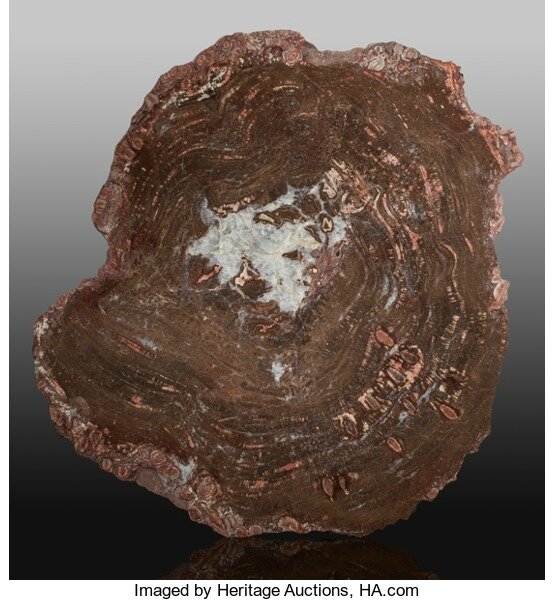

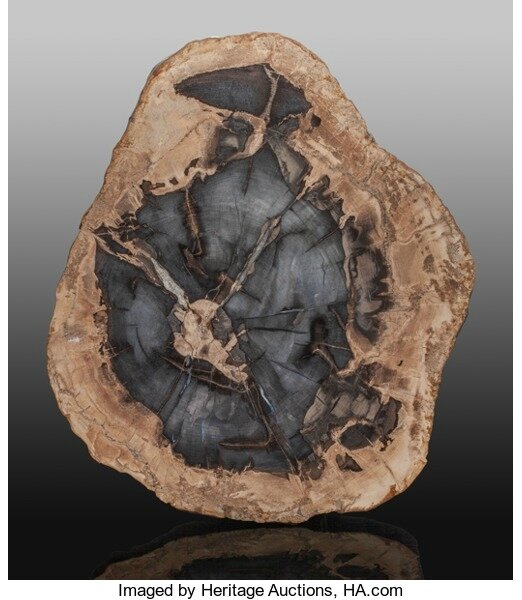

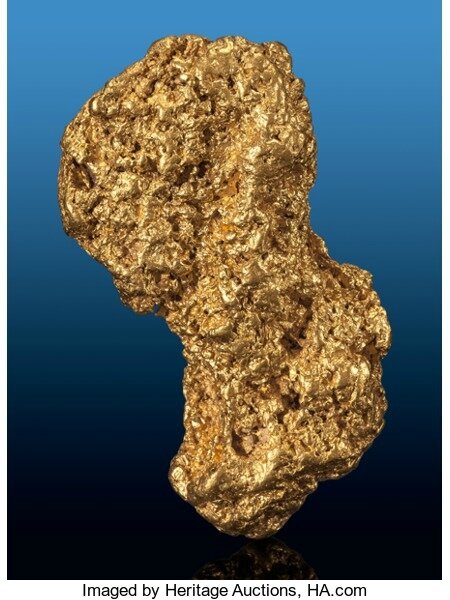

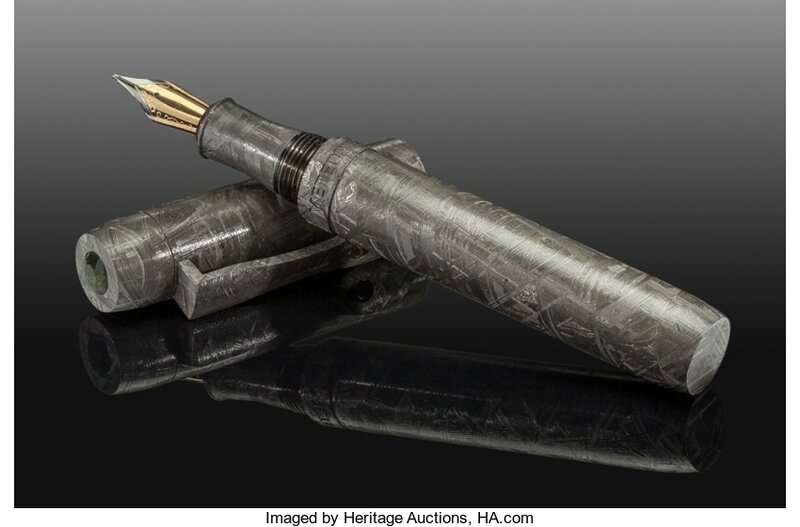
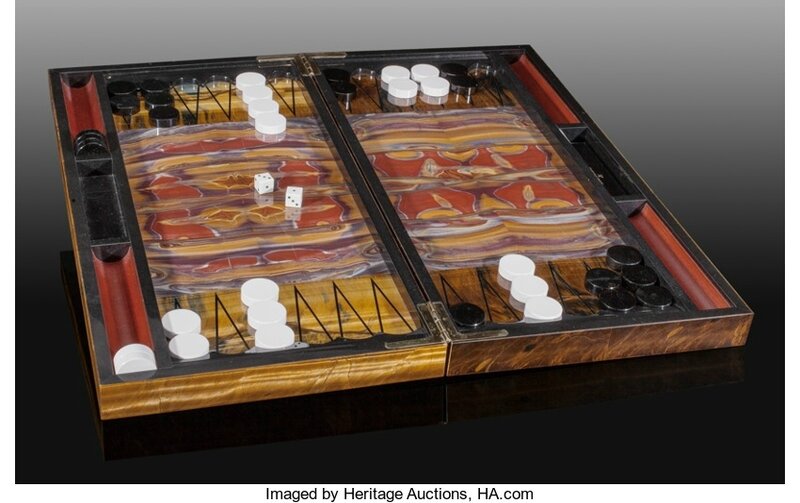
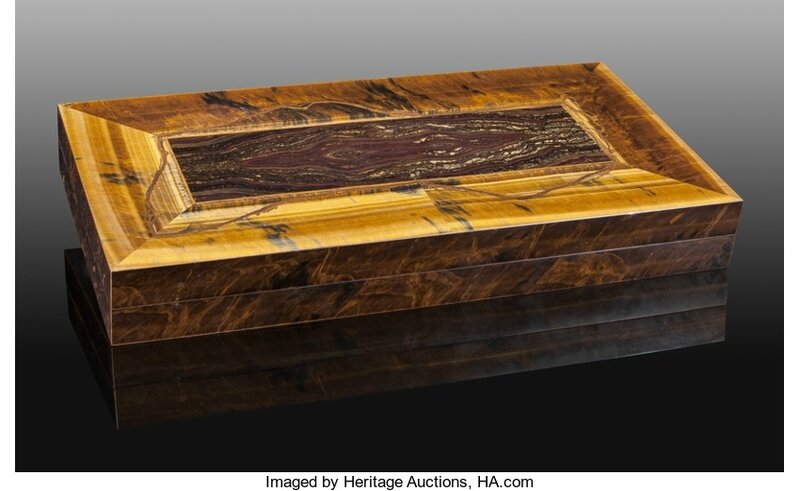

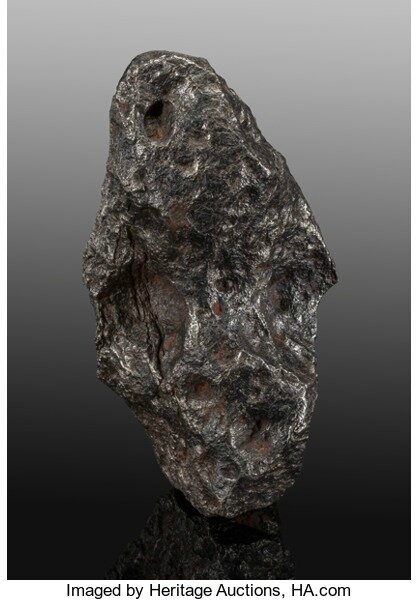




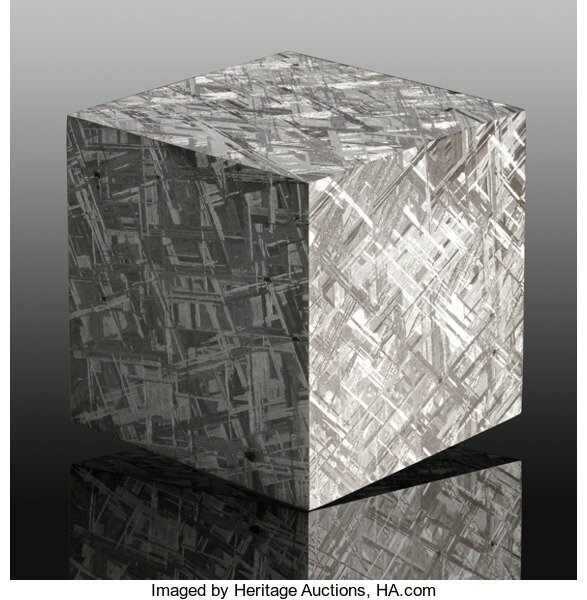


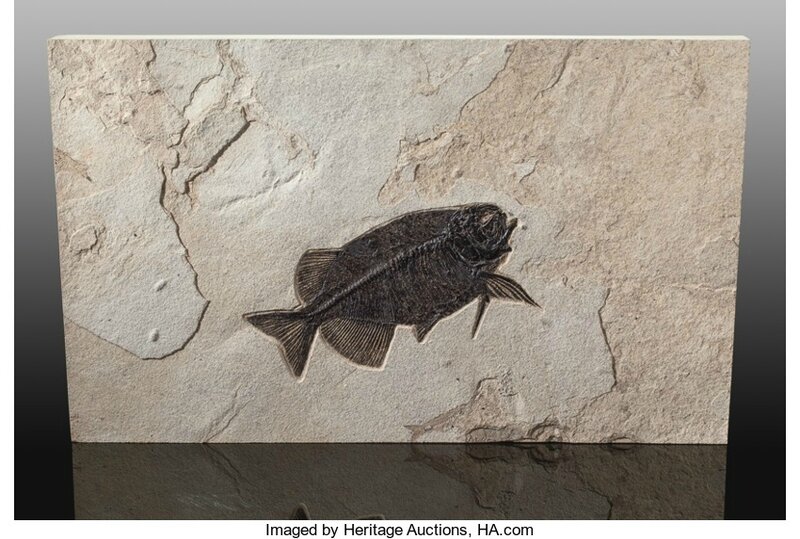



/http%3A%2F%2Fstorage.canalblog.com%2F32%2F77%2F119589%2F95773179_o.jpg)
/http%3A%2F%2Fstorage.canalblog.com%2F43%2F12%2F119589%2F29606236_o.jpg)
/http%3A%2F%2Fstorage.canalblog.com%2F86%2F49%2F119589%2F110762071_o.jpg)
/http%3A%2F%2Fstorage.canalblog.com%2F03%2F23%2F119589%2F110307873_o.jpg)